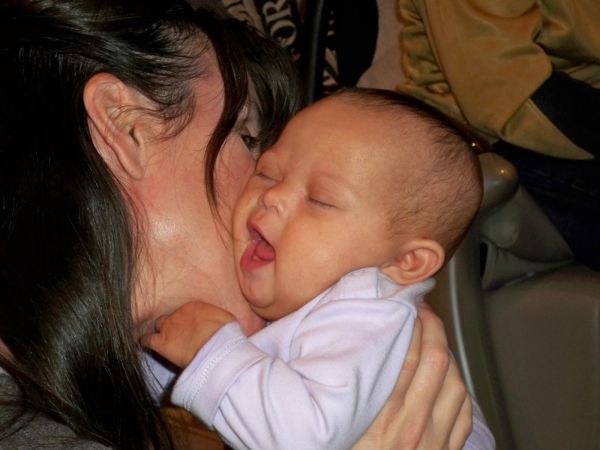
Down syndrome is a chromosomal condition that is caused at the time of birth and leads to a disability in cognition and lower learning skills with impaired physical growth. Down syndrome is named after a British physician Dr. John Landon Down, who in 1866 first described the group of characteristics to define people with such a disability. Individuals with Down syndrome are seen to have an extra copy of whole or partial genetic material on the 21st chromosome in all or some cells of the body. Down syndrome affects 1 in every 860 born children. Although statistics show that it is more common with children from older parents due to more exposure of the mutagenic agents on the reproductive cells. Here is a description of the causes and characteristics of Down syndrome.
Causes of Down syndrome
Every cell in our body contains a group of genes placed on the chromosomes present in the nucleus (center) of the cells. There are 23 pairs (total 46) of chromosomes present in the nucleus of every cell. At the time of conception (when zygote is formed after the fusion of sperm and ovum), 23 chromosomes are received from the mother and the rest 23 from the father. At birth, the neonate has a copy of these 23 pairs of chromosomes present in every nucleus of all the cells of the body. Due to some mutagenic changes in the chromosome 21 before or during conception, the child born with Down syndrome has an added copy of chromosome 21, either full or partial, in all or some cells of the body.
Trisomy 21 is the most common type of Down syndrome and accounts for around 95 percent of the total individuals suffering from this syndrome. Trisomy 21 is the result of a faulty cell division process called nondisjunction. Here the sperm or the egg comes with an added copy of chromosome 21, before or at the time of conception. As a result, the nucleus of the cells contains 47 instead of 46 chromosomes in the cells of the body.
The less common type of Down syndrome is the Mosaic or Robertsonian translocation that accounts for the remaining 5 percent of the individuals suffering from Down syndrome. Mosaic Down syndrome is characterized by having Trisomy 21 in some cells while other cells have normal genetic material. In the cases of Robertsonian translocation Down syndrome, a part of chromosome 21 cuts off and attaches to another chromosome at the time of cell division (meiosis). A person with Robertsonian translocation Down syndrome may appear to be physically normal but is the carrier and is at a high risk of reproducing a child with Down syndrome.
Characteristics of people with Down syndrome
People suffering from Down syndrome have many mental and physical characteristics in common. Medical researchers have found 50 characteristics related to the Down syndrome, where most people may show only few of these characteristics. The more common physical characteristics include:
1. Microgenia: A chin that is abnormally small
2. Mongoloid fold: Epicanthic skin folds at the corner of the eyes
3. Muscle hypotonia: Poor muscle tone
4. Brushfield spots: Small white spots on the iris (round colored circle in the eye)
5. Underdeveloped growth
6. Flat and broad face
7. Squat neck
8. Flat nasal bridge
9. Short fingers
10. More than normal space between the large and the second toe
11. Fingerprints atypical in nature
12. Shortened extremities
13. Smaller genitalia
14. Comparatively smaller teeth
When overall growth parameters like weight, height, and head circumference are measured in individuals with Down syndrome, they are seen smaller as compared to the individuals of the same age group. Individuals with Down syndrome are smaller in height with an average of 5 feet for males and slightly shorter for females. The legs of such individuals are curved (bow shaped). These individuals also become obese as the age progresses.
When it comes to the mental capability of the individuals suffering from Down syndrome, they are intellectually challenged. The IQ level of these individuals is lower in comparison to the normal individual of the same age. The cognitive development is also delayed. It is seen that the speech and fine motor skills are also delayed in the individuals suffering from Down syndrome. Some children among those who are born with Down syndrome learn to walk at the age of 2 years while others may take 4 years’ time due to delayed motor skills.
Apart from physical and mental characteristics, the children born with Down syndrome may also suffer from various health problems like congenital heart defects, respiratory and gastrointestinal problems, leukemia and reduced immunity. The children with Down syndrome may suffer from frequent infections. Other associated medical problems include vision and auditory problems, epilepsy and various skin problems.




